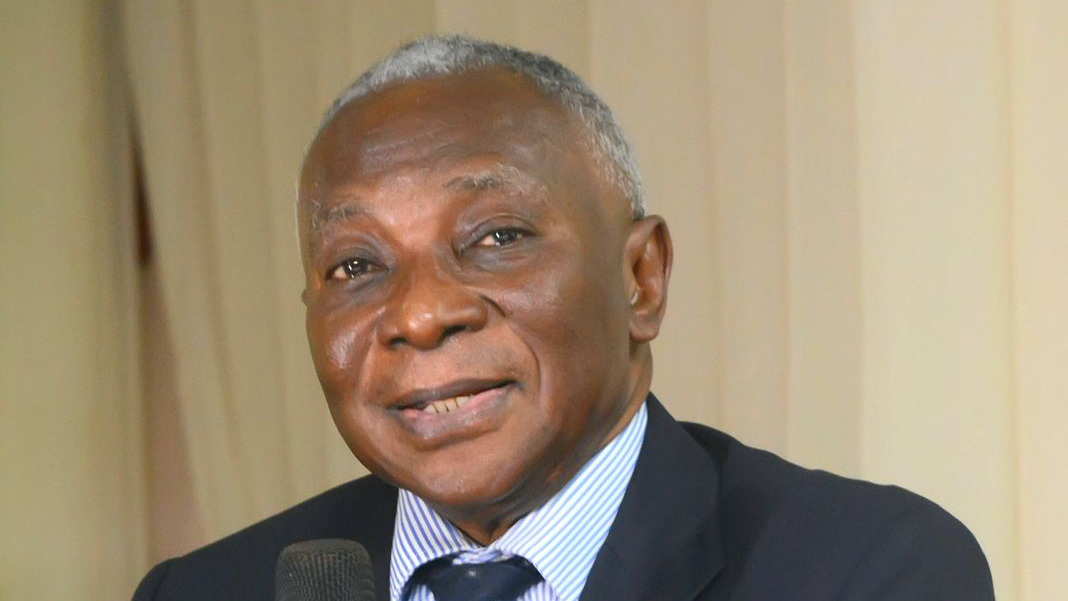
To paraphrase the former US Defence Secretary, Donald Rumsfeld, there are things that we know, that we know, which we call known knowns. And there are things we know that we do not know, these are known unknowns. Striking known knowns confronting the 21st Century are the fact that there is a global recession; the transformational effects of digitalisation; and the unimpeachable certainty that governments the world over cannot deliver all services to all people all of the time. Poetically alluring as Rumfeld’s puns may be, nevertheless, they are no substitute for empiricism.
The US National Bureau of Economic Research (NBER) characterises a recession as a significant decline in economic activity spread across the economy, lasting more than a few months, normally visible in production, employment, real income amongst other indicators. A recession commences when an economy reaches a peak of activity and ends when the economy reaches its trough. By extrapolation, when these factors occur in multiple countries, it is entirely reasonable to draw an inference of a global recession. In short, it is an extended period of economic underperformance around the world.
The evidence supporting the global recession assertion is pretty clear. The extant Russia/Ukraine war has adversely impacted commodity prices. For example, in October 2021 Brent crude traded at $78 per barrel, and exactly 12 months later in October 2022, it traded at $93.4c per barrel, a variance of 19.7%. The shock waves are reverberating across the world with higher energy prices in Europe, USA and beyond. Besides, interest hikes in 2022 averaged 0.8% in USA, 0.5% in UK and 11.5% in Nigeria; 17% in Ghana, 20% in Angola; and a whopping 44.5% and 65% in Argentina and Mexico respectively.
Plus, Statista estimates Nigeria’s 2022 unemployment rate at 33%; South Africa’s at 33.9%; Spain’s at 12.6%; Greece’s at 12.3% and Turkey’s at 10.8%. And that represents only part of the challenge. Other complexities relate to the fact that 800 million people live without access to electricity and 2.2 billion people lack access to safe drinking water. Likewise, congested airports, roads and seaports consistently impede free trade and economic growth.
Public Private Partnerships (PPPs), then, are contracts developed between private sector and public sector bodies with the objective of injecting private sector capital, expertise and resources to help deliver public sector assets and services. It encompasses a wide variety of delivery models from loose, informal and strategic compacts, to complex Design, Build, Finance and Operate (DBFO) type service contracts and formal joint venture companies or special purpose vehicles.
The intervention logic for PPPs is predicated on several important factors: First, is the realisation that sector expertise to execute a particular programme or project oftentimes does not reside within the public sector. Second, risk allocation is borne by the party best able to manage it, which is often the private sector or PPP emanation known as a Special Purpose Vehicle (SPV). Third, is a financial argument. The capital required to implement PPP projects is more easily secured by private sector delivery partners than via the public sector borrowing requirement or budget deficit financing.
Fourth, is the imperative of delivering 17 Sustainable Development Goals adopted by UN Member States in 2015. These establish a shared global framework for poverty eradication, education and health improvement, reducing inequalities, catalysing economic growth and tackling climate change. Governments deliver these exclusively without impoverishing taxpayers. Fifth, is the ideologically “pure” rationale for shrinking the State and empowering free markets and competition in service delivery. Last, but not the least, is the profit-sharing motive, that financial gains upon effective PPP implementation are shared by the public and private sectors.
These intertwined factors therefore underpin the premise for a broader, cost-effective, smarter, strategic and targeted deployment of Public Private Partnerships (PPPs or 3Ps) in service delivery because governments, however well intentioned, quite frankly cannot do all things! Most governments are saddled with crippling debts burdens too. US debt to GDP ratio is 94.14%; UK’s 104.31%; France’s 131.52%; and Japan’s 290.24%; The ambits of PPPs are extremely wide extending to aviation, construction, defence, finance, healthcare, infrastructure, procurement, transport and digital inclusion.
The Infrastructure Concession Regulatory Commission (ICRC) in Nigeria, for example, oversees the development of PPPs. The ICRC was established in 2008 pursuant to the Infrastructure Concession Regulatory Commission (Establishment) Act 2005 with a view to tackling the country’s physical infrastructure deficit and stimulating economic growth. That notwithstanding, the grundnorm, the Constitution of the Federal Republic of Nigeria 1999 (as amended), at section 18, Part II (Concurrent Legislative List), affirms that “… a House of Assembly may make Laws for that State with respect to industrial, commercial or agricultural development of the State.”
Demonstrably, PPPs are aimed at economic or commercial development so each state of the federation can develop its own PPPs. Anchored on this constitutional provision, is the legal basis for the Lagos State Public Private Law 2011. Section 1(1) of the latter enactment establishes a PPP office for the state whilst section 6 therein defines the functions of the office to include taking decisions on all matters appertaining to PPPs in the State; identifying priority areas and projects for 3Ps; establishing operational guidelines, budget planning, supervision, engagement of consultants etc.
A pioneering PPP in Nigeria was the 2003 Design, Build, Operate and Transfer of the Lagos Terminal 2 Airport, via a concession by the Federal Government to Bi-Courtney Limited (BCL). Under this scheme, BCL designed, financed, constructed and equipped the Airport and will run it for 36 years. Other Nigerian PPP projects include the Gurara Hydropower Dam Project, in Kaduna State (USD 33.65 million); the LOLO Inland Container Depot, in Kebbi State (USD 3.34 million); the Uyo Grain Storage facility in Akwa Ibom State (USD 331, 205) et al. In China, there are over 14,000 PPP projects totalling USD 2.7 trillion in aggregate terms. In Virginia, USA, the government’s market competition policies led to a proposal to construct a 22KM toll road linking Dulles International Airport to Loudon County. The project cost was USD350 million, of which USD 332 million was mobilised through the issue of bonds to institutional investors.
For its claimed benefits, PPPs have been criticised by analysts and scholars as opaque and conflating the frontiers of legitimate public purposes, informational asymmetry and profit-making by private firms. Furthermore, cost overruns, delays, underperformance are additional concerns expressed against PPP models.
Then again, the arguments for their use are objectively sustained upon a balance of the risk of delivering complex public projects by governments, who generally lack the capital, requisite expertise and technical know-how; as against the private sector who predominantly assume the greater burden of risk of delivery to time, budget and quality; possess the capital and technical competence to deliver important projects.
What then is the connection between PPPs and digital inclusion? Is there an intervention logic? Is there a practical example?
For the purposes of this article, digital inclusion simply means basic information and communication technological (ICT) literacy that is equitably accessible to individuals and communities, that are able, ready, teachable and willing whether via internet, smartphones and other devices. The phrase “able, ready, teachable and willing” implies that sufficient education support services has been provided by government in its widest sense, which generally has primary responsibility for basic and ICT literacy as they are, in progressive climes, public goods.
Another digital inclusion intervention logic is the United Nations’ Sustainable Development Goal 4, which is aimed at ensuring inclusive and equitable quality education and promoting lifelong learning for all.
As with all things, digital inclusion is not a static, but a dynamic, and highly interactive technological phenomenon. It is therefore evolving and its pertinent elements include access to affordable and effective broadband internet service; internet-enabled devices that meet the needs of the user; access to digital literacy training and development; robust qualitative technical support; legally responsible applications and empowering online content designed to foster knowledge, independence, meaningful societal participation and collaboration. Digital inclusion demands intentionality to shrink historical, institutional and structural barriers to accessing and using technology.
Take Italy for example. The Digital Identity System (SPID) launched in 2016 is a Public Private Partnership for accessing public administration online services through a unique one-off digital identity generated by private identity providers. Upon activation, citizens can use it to access public online services from public Wi-Fi, healthcare information to the payment of school fees. SPID’s attraction is heightened because it streamlines transaction costs in accessing public administration online services and enables citizens to utilize secure online services. Plus, SPID is compliant with the European Union regulation on digital identity services (eIDAS), which enables the pan-European interoperability of public services
Therefore, the answers to the questions as to whether PPPs apply to digital inclusion, the subsistence of an intervention logic and a practical example thereof, are, inescapably, affirmative.
Now, to Nigeria. As highlighted above using 2022 as a base year, the country has one of the highest unemployment rates in the world at 33%. By comparison, U.S. unemployment rates are approximately 3.7%, UK’s 4%, China’s 5.5%, Egypt’ s 7.4% whilst Italy’s 7.8%.
Meanwhile, the National Bureau of Statistics affirms that youth unemployment in Nigeria is 42.5%. As the saying goes, an idle brain is the devil’s workshop. It does not take a rocket scientist to figure out that unemployed youths or those not in employment, education or training (NEETs) are raw materials for anti-social behaviour, criminality and worse, terrorism. Swathes of the country are already besieged with kidnapping and terrorist campaigns by extremist ethno-religious groupings. Indeed, whilst kinetic military responses are absolutely necessary to tackle the heightened insecurity, they are barely sufficient.
Summing up, it is recommended that: (1) urgent, strategic, non-kinetic approaches are, concurrently, and meaningfully, adopted; (2) the public, private and not-for-profit sectors should collaboratively develop time-bound models to tackle the disproportionately high unemployment and its perverse effects; and (3) the organised private, public and not for profit sectors should innovatively frame digital inclusion education and re-education strategies to engage, encourage and reconnect the NEETs, and others, where feasible, with mainstream society under the auspices of proven Public Private Partnerships. These, after all, are the known knowns to which I alluded at the start.
Ojumu is Principal Partner at Balliol Myers LP, a firm of legal practitioners in Lagos, Nigeria.






